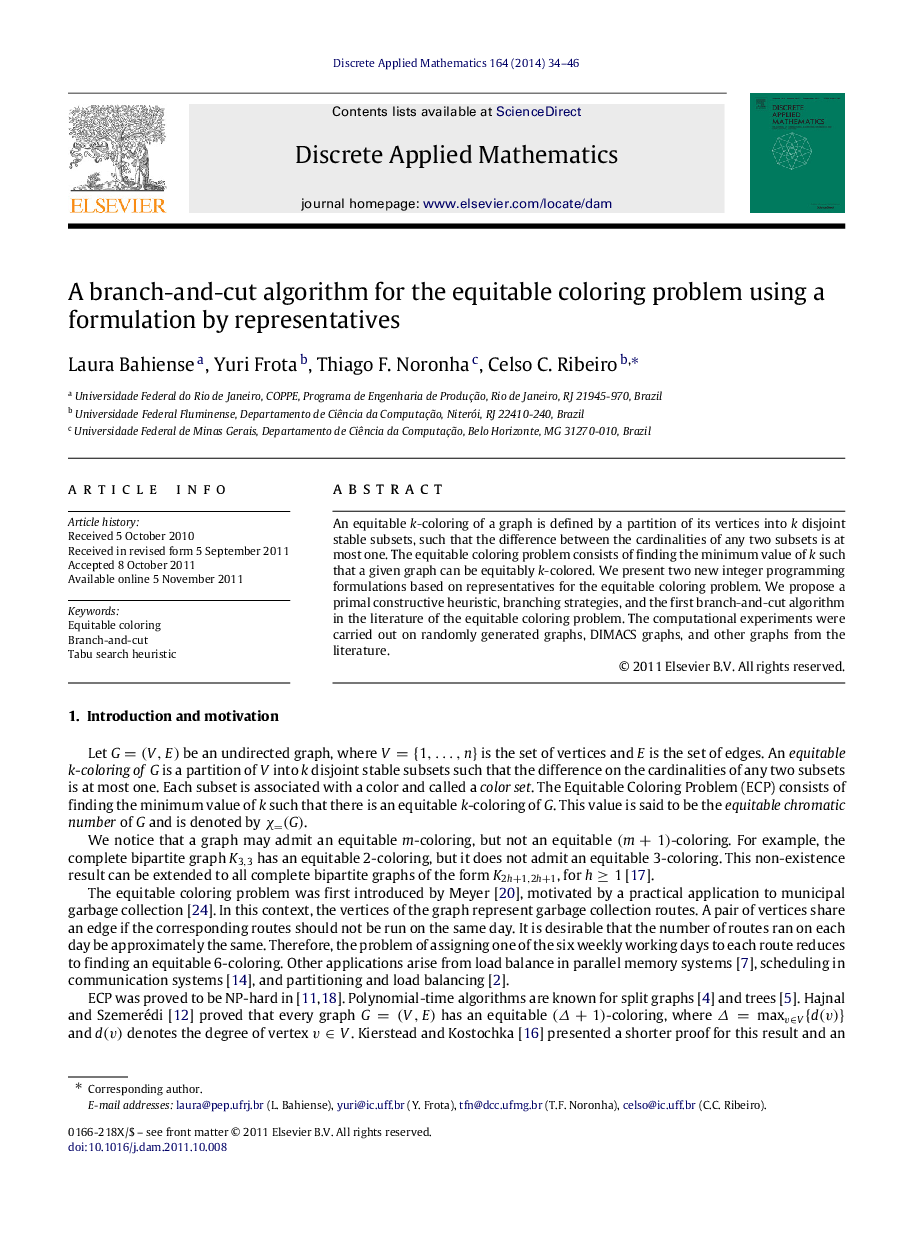| Article ID | Journal | Published Year | Pages | File Type |
|---|---|---|---|---|
| 419083 | Discrete Applied Mathematics | 2014 | 13 Pages |
Abstract
An equitable kk-coloring of a graph is defined by a partition of its vertices into kk disjoint stable subsets, such that the difference between the cardinalities of any two subsets is at most one. The equitable coloring problem consists of finding the minimum value of kk such that a given graph can be equitably kk-colored. We present two new integer programming formulations based on representatives for the equitable coloring problem. We propose a primal constructive heuristic, branching strategies, and the first branch-and-cut algorithm in the literature of the equitable coloring problem. The computational experiments were carried out on randomly generated graphs, DIMACS graphs, and other graphs from the literature.
Related Topics
Physical Sciences and Engineering
Computer Science
Computational Theory and Mathematics
Authors
Laura Bahiense, Yuri Frota, Thiago F. Noronha, Celso C. Ribeiro,
